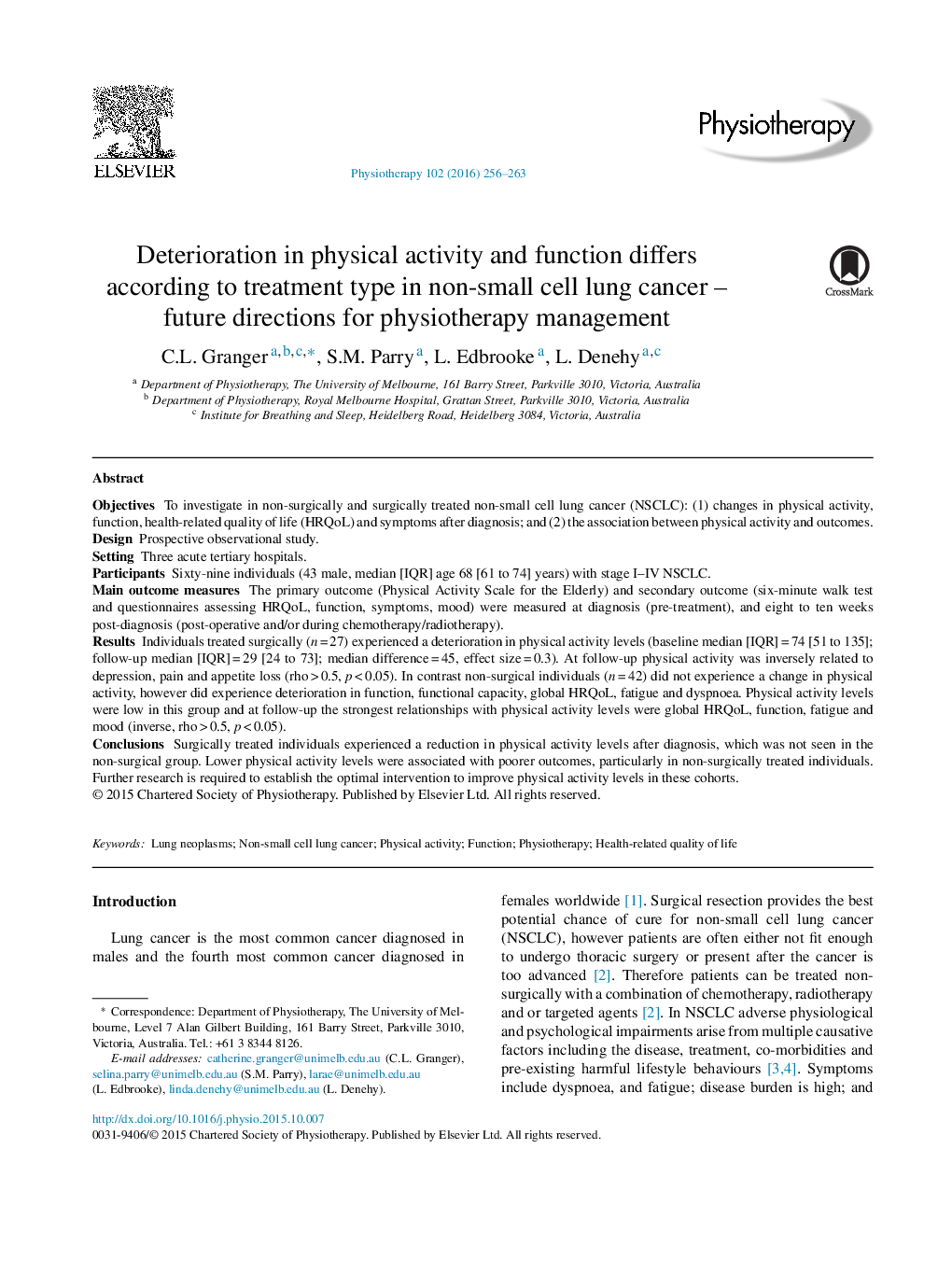| کد مقاله | کد نشریه | سال انتشار | مقاله انگلیسی | نسخه تمام متن |
|---|---|---|---|---|
| 2627496 | 1403536 | 2016 | 8 صفحه PDF | دانلود رایگان |
ObjectivesTo investigate in non-surgically and surgically treated non-small cell lung cancer (NSCLC): (1) changes in physical activity, function, health-related quality of life (HRQoL) and symptoms after diagnosis; and (2) the association between physical activity and outcomes.DesignProspective observational study.SettingThree acute tertiary hospitals.ParticipantsSixty-nine individuals (43 male, median [IQR] age 68 [61 to 74] years) with stage I–IV NSCLC.Main outcome measuresThe primary outcome (Physical Activity Scale for the Elderly) and secondary outcome (six-minute walk test and questionnaires assessing HRQoL, function, symptoms, mood) were measured at diagnosis (pre-treatment), and eight to ten weeks post-diagnosis (post-operative and/or during chemotherapy/radiotherapy).ResultsIndividuals treated surgically (n = 27) experienced a deterioration in physical activity levels (baseline median [IQR] = 74 [51 to 135]; follow-up median [IQR] = 29 [24 to 73]; median difference = 45, effect size = 0.3). At follow-up physical activity was inversely related to depression, pain and appetite loss (rho > 0.5, p < 0.05). In contrast non-surgical individuals (n = 42) did not experience a change in physical activity, however did experience deterioration in function, functional capacity, global HRQoL, fatigue and dyspnoea. Physical activity levels were low in this group and at follow-up the strongest relationships with physical activity levels were global HRQoL, function, fatigue and mood (inverse, rho > 0.5, p < 0.05).ConclusionsSurgically treated individuals experienced a reduction in physical activity levels after diagnosis, which was not seen in the non-surgical group. Lower physical activity levels were associated with poorer outcomes, particularly in non-surgically treated individuals. Further research is required to establish the optimal intervention to improve physical activity levels in these cohorts.
Journal: Physiotherapy - Volume 102, Issue 3, September 2016, Pages 256–263
